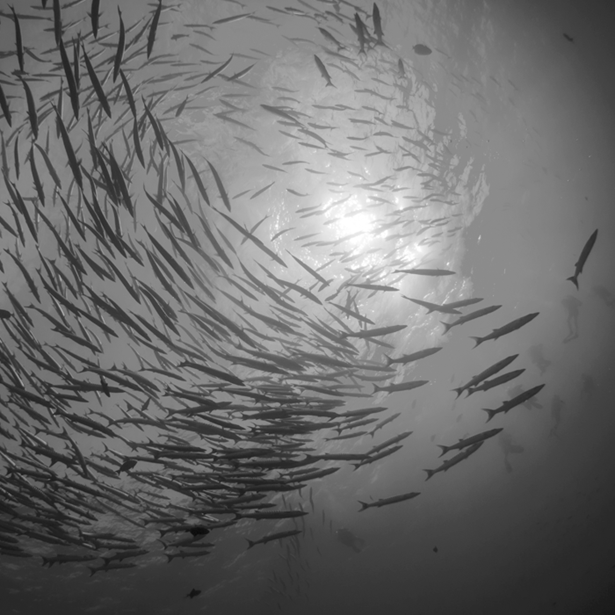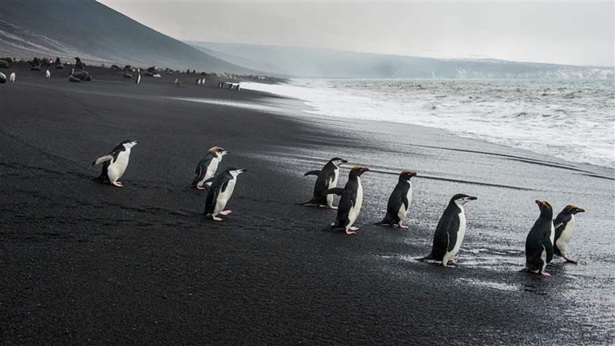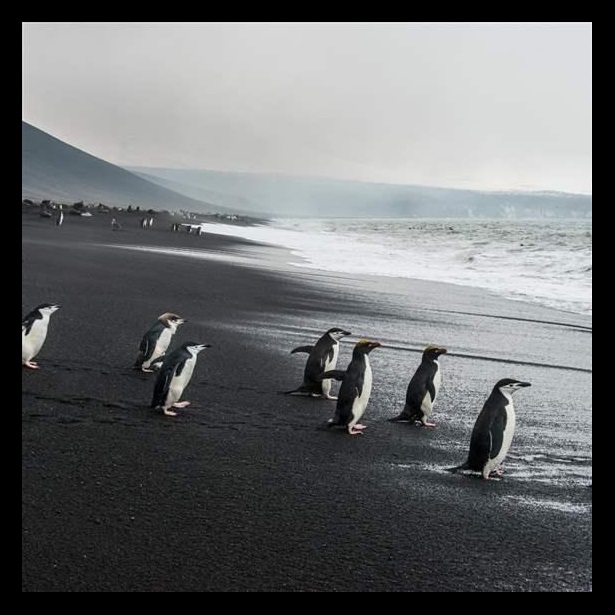South Georgia and the South Sandwich Islands lie more than 1,700 kilometers (1,050 miles) from the southern tip of South America in a remote expanse of the South Atlantic Ocean. While mostly uninhabited by humans, the area hosts what could be the single largest concentration of marine species in the world.
In the past, the wildlife of South Georgia and the South Sandwich Islands was seriously depleted by overexploitation, mostly in the form of whaling. The Pew Bertarelli Ocean Legacy Project and its partners are exploring the feasibility of enhancing marine protections in the waters around South Georgia and the South Sandwich Islands.
Forming part of the Antarctic ecosystem, the rich waters are full of plankton and krill which support one of the largest and most varied populations of seabirds and marine mammals on earth. Overall, they have a higher diversity of species than the more temperate Galapagos Islands.
The islands, a British overseas territory, provide habitat for more than four million Antarctic fur seals—more than 95 percent of the world’s population—and more than half of the world’s southern elephant seals. Sperm, humpback, and other whale species are also frequently seen in the islands’ waters.
South Georgia has as many as 100 million seabirds, including vast numbers of penguins, albatross, prions, and petrels. The Antarctic’s only songbird, the South Georgia pipit, of which only 6,000 remain, is found only on that island. The continued existence of this species is threatened by the spread of introduced rats on South Georgia. Zavodovski Island in the South Sandwich Islands has more than one million chinstrap penguins, the largest colony in the world.
The South Sandwich Islands have no permanent inhabitants, while South Georgia has a transitory population of scientists, government officials and military personnel. Both are mountainous and capped by glaciers. Volcanic in origin, the islands are surrounded by nutrient-rich waters. The South Sandwich Trench, which at more than eight kilometers (five miles) is one of the deepest parts of the ocean, includes thermal vents which are yet to be fully explored.
Captain James Cook, a Briton, first landed on South Georgia in 1775. In the early 20th century, it was the destination of Sir Ernest Shackleton’s epic mission to save the crew of his ship, the Endurance. In 1916, after an 800-mile voyage in a lifeboat, he reached South Georgia. Crossing its ice cap on foot, he famously remarked: “We had seen God in His splendours, heard the text that Nature renders. We had reached the naked soul of man.”
The Pew Bertarelli Ocean Legacy Project is calling for enhanced protection of this spectacular region.
Did you know?
- The islands have a higher diversity of species than the Galapagos Islands.
- Zavodovski Island is home to the largest colony of chinstrap penguins in the world.
- South Georgia Island is believed to have as many as 100 million seabirds.
- This region is home to more than 95 percent of the world’s Antarctic fur seals. These waters include the South Sandwich Trench, one of the deepest parts of the ocean.
Pew Bertarelli Ocean Legacy Project
The Pew Charitable Trusts and Dona Bertarelli created the Pew Bertarelli Ocean Legacy Project, with the shared goal of establishing the first generation of ecologically significant, large, and effective marine protected areas (MPAs) around the world. Today, the Pew Bertarelli Ocean Legacy Project also seeks to connect MPAs and help conserve key migratory species and entire marine ecosystems. These efforts build on more than a decade of work by Pew and the Bertarelli Foundation, led by Dona Bertarelli, to create large-scale, highly or fully protected MPAs. Between them, they have helped to obtain designations or commitments to safeguard nearly 12.6 million square kilometers (4.8 million square miles) of ocean by working with communities, local leaders, philanthropic partners, Indigenous groups, government officials, and scientists. Dona Bertarelli is a philanthropist, investor, sportswoman, and strong advocate for ocean conservation. The Pew Charitable Trusts is driven by the power of knowledge to solve today’s most challenging problems, including the need for effective marine conservation.





